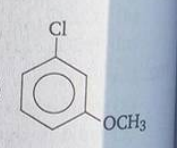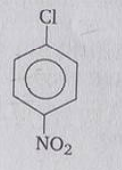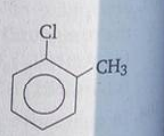Why does ethylene oxide react readily with nucleophiles such as ammonia, whereas THF is inert to nucleophilic attack by ammonia?
The carbon-oxgyen bond of a generic ether R-O-R is inert to nucleophilic attack because an alkoixde (RO-) is a poor leaving group. Therefore, we expect THF to be inert to nucleophilic attack. An epoxide has significant ring strain (about 27 kcal mol−1) . Breaking of C-O bond relieves this ring strain. This release of ring strain lowers the transition state energy so as to overcome the poor leaving group ability of RO- , so that the C-O bond of an epoxie can be cleaved by a strong nucleophilie.
Topper's Solved these Questions
- ALCOHOLS AND ETHERSBOOK - MS CHOUHANCHAPTER - ALCOHOLS AND ETHERSEXERCISE - ADDITIONAL OBJECTIVE QUESTIONS (SINGLE CORRECT CHOICE TYPE)
26 Videos
- ALCOHOLS AND ETHERSBOOK - MS CHOUHANCHAPTER - ALCOHOLS AND ETHERSEXERCISE - ADDITIONAL OBJECTIVE QUESTIONS (Linked Comprehension Type ) Paragraph for Question 1 to 4
1 Videos
- ALCOHOL, ETHERS AND EPOXIDESBOOK - MS CHOUHANCHAPTER - ALCOHOL, ETHERS AND EPOXIDESEXERCISE - Subjective Problems
1 Videos
- ALCOHOLS FROM CARBONYL COMPOUNDSBOOK - MS CHOUHANCHAPTER - ALCOHOLS FROM CARBONYL COMPOUNDSEXERCISE - Additional Objective Questions (Multiple Correct Choice Type )
1 Videos
Similar Questions
Knowledge Check
Which of the following would react most readily with nucleophiles ?
A B
B C
C D
D
Which of the following would react most readily with nucleophiles ?
A B
B C
C D
D
Aldehydes and ketones are amphoteric. Thus they can act both as acids and bases. Under acidic conditions, the carbon of the protonated canbonyl group is much more electrophilic, reacting even with weak nucleopphilie. Carbonyl compound gives nucleophilic addition reaction. In this reaction the nucleophilic attack proceeds the elecrophilic attack.
Carbonyl compounds gives nucleophilic addition withAcarbon nucleophileBoxygen nucleophileCNitrogen nucleophileDAll of these
Why do haloalkenes under go nucleophillic substitution whereas haloarenes under go electophillic substitution
View SolutionAldehydes and ketones are amphoteric. Thus they can act both as acids and bases. Under acidic conditions, the carbon of the protonated canbonyl group is much more electrophilic, reacting even with weak nucleopphilie. Carbonyl compound gives nucleophilic addition reaction. In this reaction the nucleophilic attack proceeds the elecrophilic attack.
Carbonyl compounds gives nucleophilic addition with
View SolutionAldehydes and ketones are amphoteric. Thus they can act both as acids and bases. Under acidic conditions, the carbon of the protonated canbonyl group is much more electrophilic, reacting even with weak nucleopphilie. Carbonyl compound gives nucleophilic addition reaction. In this reaction the nucleophilic attack proceeds the elecrophilic attack.
Which of these statements are correct?
View SolutionAldehydes and ketones are amphoteric. Thus they can act both as acids and bases. Under acidic conditions, the carbon of the protonated canbonyl group is much more electrophilic, reacting even with weak nucleopphilie. Carbonyl compound gives nucleophilic addition reaction. In this reaction the nucleophilic attack proceeds the elecrophilic attack.
Which of these statements are correct?
View SolutionAldehydes and ketones are amphoteric. Thus they can act both as acids and bases. Under acidic conditions, the carbon of the protonated canbonyl group is much more electrophilic, reacting even with weak nucleopphilie. Carbonyl compound gives nucleophilic addition reaction. In this reaction the nucleophilic attack proceeds the elecrophilic attack.
Which of the statements are//is correct?
View Solution
